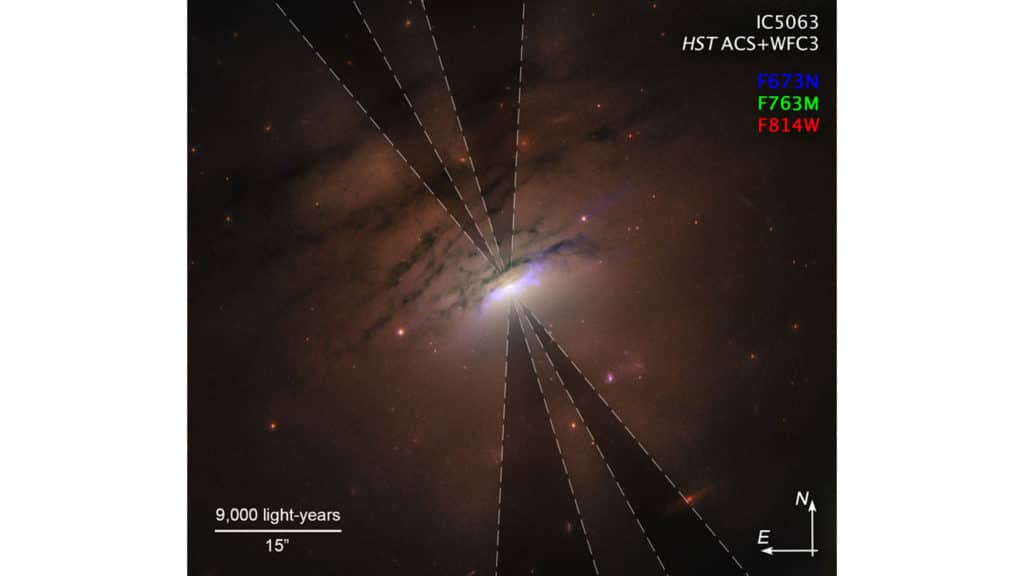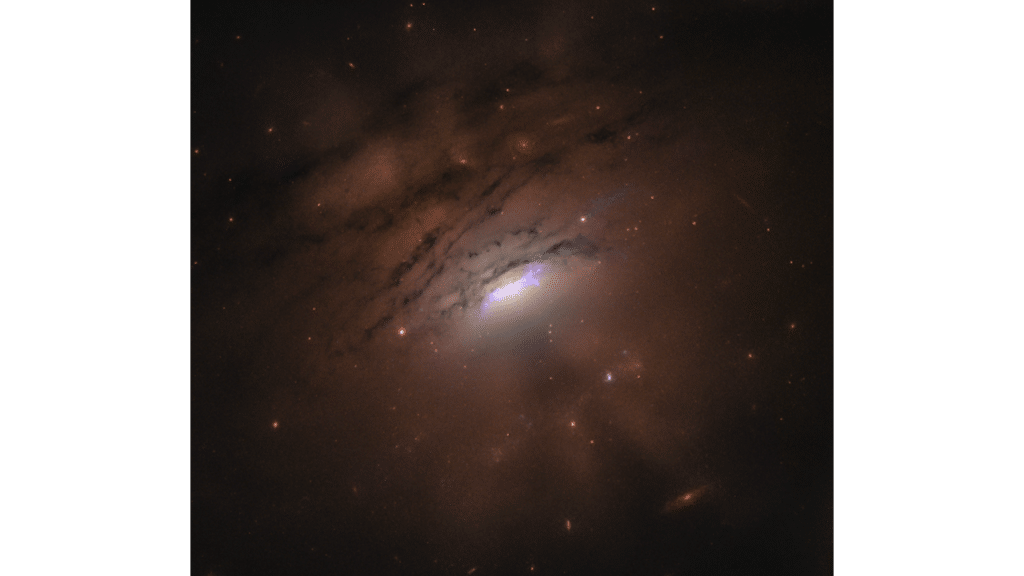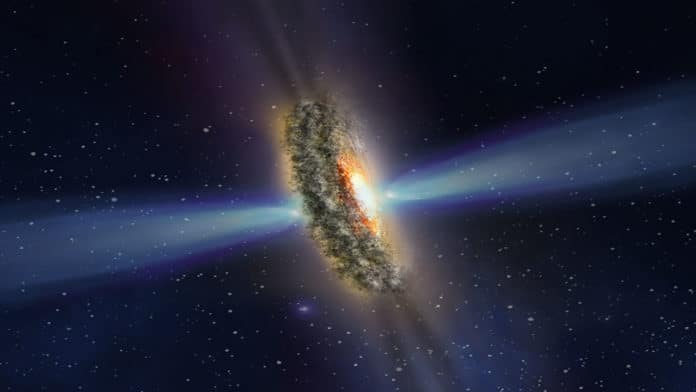Black holes pull stars and gas into its disk that swirls around. This event produces immense energy as well as a powerful gusher of light from superheated infalling gas.
The swirling disks are so distant that it is incredibly challenging to get any detail about them. Luckily, by a quirk of alignment, astronomers may be getting a glimpse of the disk’s structure around the black hole in nearby galaxy IC 5063.
The Hubble Space Telescope has observed a collection of narrow bright rays and dark shadows beaming out of the active galaxy’s blazingly bright center.
Astronomers suggest the reason behind this effect is that the swirling dusty disk around the black hole is casting its shadow into space. Some light inserts through the dust ring gaps, creating the bright rays that look like the floodlights accompanying a Hollywood movie premier.

While studying nearby galaxy IC 5063, a team of astronomers, led by Peter Maksym of the Center for Astrophysics | Harvard & Smithsonian (CfA), in Cambridge, Massachusetts, noticed a collection of narrow bright rays and dark shadows is seen beaming out of the blazingly bright center of the active galaxy.
They traced the rays back to the galaxy’s core. However, scientists have developed multiple possible theories for the lightshow; the most intriguing idea suggests that an inner-tube-shaped ring, or torus, of dusty material surrounding the black hole, casts its shadow into space.
These beams offer clues to the distribution of material near the black hole, causing the shadow play.
Astronomers noted, “What is fascinating is that we can see the same interplay of light and shadow in our sky at sunset when the setting sun casts streaks of bright rays and dark shadows through scattered clouds.”

According to Maksym’s proposed scenario, the dust disk around the black hole doesn’t block all of the light. Gaps in the disk allow light to beam out, creating brilliant cone-shaped rays similar to the fingers of light sometimes seen at sunset. However, the rays in IC 5063 are happening on a vastly larger scale, shooting across at least 36,000 light-years.
These shadows appear as dark finger shapes interspersed with bright rays. These beams and shadows are visible because the black hole and its ring are tipped sideways relative to the galaxy’s plane. This alignment allows the light beams to extend far outside the universe.
Maksym said, “I’m most excited by the shadow of the torus idea because it’s a cool effect that I don’t think we’ve seen before in images, although it has been hypothesized. Scientifically, it’s showing us something that is hard—usually impossible—to see directly. We know this phenomenon should happen, but we can see the effects throughout the galaxy in this case. Knowing more about the torus’ geometry will have implications for anybody trying to understand the behavior of supermassive black holes and their environments. As a galaxy evolves, it is shaped by its central black hole.”
“This discovery would not have been possible without Hubble’s sharp vision. The galaxy is also relatively nearby, only 156 million light-years from Earth. Older images from telescopes on the ground showed maybe hints of this kind of structure, but the galaxy itself is such a mess that you’d never guess that this is what’s going on without Hubble.”
Journal Reference:
- W. Peter Maksym et al. Crepuscular Rays from the Highly Inclined Active Galactic Nucleus in IC 5063*. DOI: 10.3847/2041-8213/abb9b6
